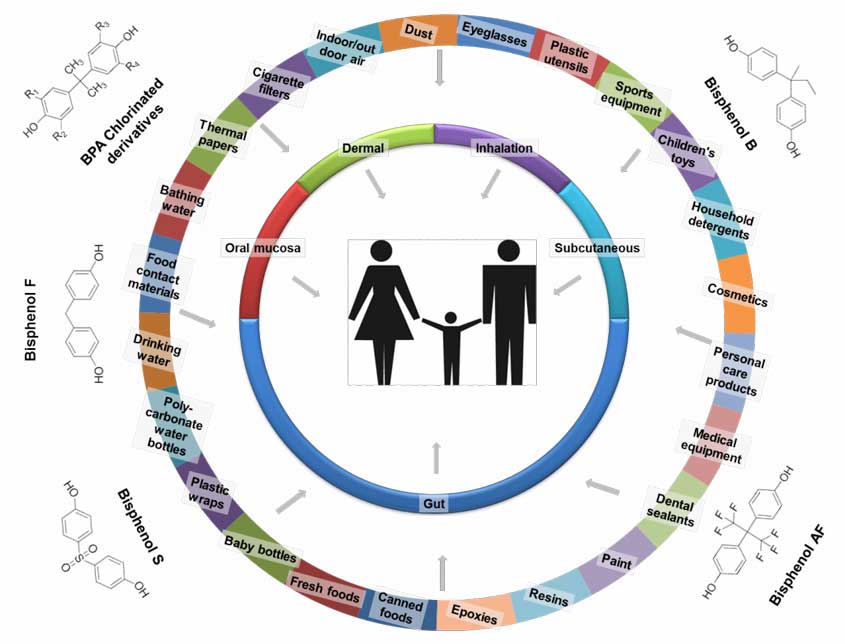The Cyprus International Institute for Environmental and Public Health in association with the Harvard School of Public Health (CII) together with the Icahn School of Medicine at Mount Sinai of New York, USA, and the University Medical Center of Groningen, The Netherlands, just published a review article in the international journal Environment International (Impact Factor IF: 5.56). The article reviews all studies that deal with the human biomonitoring of human exposures to chlorinated derivatives and structural analogs of bisphenol A in various human and environmental matrices. The authors critically discuss about the human exposure sources and routes to ClxBPA and BPA analogs, including their human health effects, their metabolism and toxicity outcomes as observed in in-vitro and in-vivo studies. The article elaborates on current limitations, future opportunities and research needs linked with the inclusion of ClxBPA and BPA analogs into exposure assessment protocols of relevant epidemiological studies.
Last years, the interest on bisphenol A (BPA) has been growing. BPA is one of the chemicals ranked very high in the chemicals’ list with the highest production volume estimates, worldwide, and it is used in polycarbonate plastics and epoxy resins. We can also find it in thermal receipts and certain personal care- and household-cleaning products. BPA is an endocrine disruptor and it is linked with health risks of developing obesity, type II diabetes mellitus. BPA structural analogs (BPA-free labelled), such as BPF and BPS that are considered safer than BPA itself have recently entered in the market and they are used in various BPA-free consumer products. However, their long-term and chronic health impact to humans and sensitive subpopulation groups has not been fully assessed yet. Moreover, BPA is reacts with disinfectant chlorine -used as disinfectant in tap water and/or consumer products- forming instantaneously chlorinated BPA derivatives (ClxBPA) that show increased estrogen-activity (linked with some metabolic diseases) when compared with that of BPA. Similar reactivity to disinfectant chlorine is anticipated for the structural BPA analogs, but this remains to be experimentally documented.
An increasing number of scientific reports dealing with the sources and routes of human exposure, biomonitoring, metabolism, and toxicity of the above mentioned substances in ecotoxicological and animal studies can be found, but the topic is less studied in human populations.
The authors reported the extensive occurrence of chlorinated BPA derivatives and structural analogs of BPA in human matrices and diverse environmental media. In-vitro and in-vivo studies point to their obesogenic and diabetogenic potential, therefore, it was justified that the inclusion of BPA analogs and derivatives in prospective cohort studies would clarify their health effects in a systematic manner. The researchers emphasized that additional human studies are needed to answer questions such as how ClxBPA and BPA-free compounds exposures occur, which are their biochemical pathways, exposure sources and frequency of occurrence in environmental media and consumer products, and how chlorinated BPA metabolites and BPA analogs could act as endocrine-disrupting compounds.

Andra, S.S., P. Charisiadis, M. Arora, J.V. van Vliet-Ostaptchouk, and K.C. Makris, 2015. Biomonitoring of human exposures to chlorinated derivatives and structural analogs of bisphenol A. Environ. Int., 85: 352-379.

